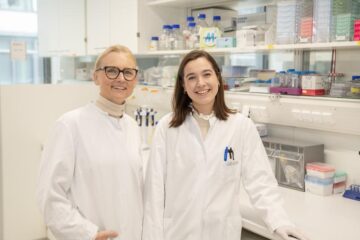UI research: PCBs found in soon-to-be-dredged Indiana Harbor and Ship Canal

The IHSC, part of the Calumet River tributary of Lake Michigan, will begin being dredged in the next few years to maintain the proper depth for ship traffic, with uncertain environmental impacts in regard to PCBs. Scientists aren't sure whether dredging will help the situation by removing the potentially harmful compounds or hurt it by stirring them up.
Employing tandem mass spectrometry, an analytical technique to determine the elemental composition of a sample or molecule, the UI researchers found high levels of PCBs. The origin of the PCBs is unknown, but they strongly resemble Aroclor 1248, a potentially toxic compound that may pose direct health hazards to humans. This mixture was used in hydraulic fluids, vacuum pumps, plasticizers and adhesives, according to the U.S. Department of Health and Human Services.
“The presence of PCBs is important because dredging will impact the fate and transport of chemicals,” said Keri Hornbuckle, professor of civil and environmental engineering in the UI College of Engineering and corresponding author of the study, published in the journal Environment International.
“It is quite possible that dredging will provide a major improvement in the situation. It may remove PCBs that are available to fish and other wildlife, and reduce the release of PCBs from the sediments,” she said. “On the other hand, dredging might increase the availability and mobility of PCBs. Now that we know PCBs are present, these questions are pertinent.”
Hornbuckle collaborated on the research with first author Andres Martinez, a graduate student in civil and environmental engineering; Karin Norstrom, a postdoctoral student in civil and environmental engineering; and Kai Wang, an assistant professor of biostatistics in the college of public health.
The IHSC is an active canal system that continues to support large vessels. But to remain viable for industrial shipping, the U.S. Army Corps of Engineers, Chicago District, began a long-term dredging project to restore adequate navigational depth.
Due to years of heavy industrial operation, the IHSC has been contaminated with PCBs. Prior to this study, there was little published data of the spatial extent and concentration magnitude of PCBs in the sediment in IHSC. The Army Corps of Engineers reported that PCBs have existed in IHSC sediment since 1977, but has not published a full report.
The PCB levels found here are comparable to other PCB-contaminated sites in the U.S., most established by law as Superfund Sites, which requires the removal of contaminants from environmental media such as soil, groundwater and sediment. The IHSC is not a Superfund Site.
Funding for the research project was provided by the National Institute for Environmental Health Sciences (NIEHS/NIH) Iowa Superfund Basic Research Program.
STORY SOURCE: University of Iowa Graduate College Office of External Relations, 205 Gilmore Hall, Iowa City, Iowa 52242-2500
MEDIA CONTACT: John Riehl, 319-335-3260, john-riehl@uiowa.edu
Media Contact
More Information:
http://www.uiowa.eduAll latest news from the category: Ecology, The Environment and Conservation
This complex theme deals primarily with interactions between organisms and the environmental factors that impact them, but to a greater extent between individual inanimate environmental factors.
innovations-report offers informative reports and articles on topics such as climate protection, landscape conservation, ecological systems, wildlife and nature parks and ecosystem efficiency and balance.
Newest articles

Innovation promises to prevent power pole-top fires
Engineers in Australia have found a new way to make power-pole insulators resistant to fire and electrical sparking, promising to prevent dangerous pole-top fires and reduce blackouts. Pole-top fires pose…

Possible alternative to antibiotics produced by bacteria
Antibacterial substance from staphylococci discovered with new mechanism of action against natural competitors. Many bacteria produce substances to gain an advantage over competitors in their highly competitive natural environment. Researchers…

Researchers have found brown fat’s “off-switch
Researchers from the University of Southern Denmark, the Novo Nordisk Center for Adipocyte Signaling (SDU), the University of Bonn and the University Hospital Bonn (UKB) have found a protein that…





















